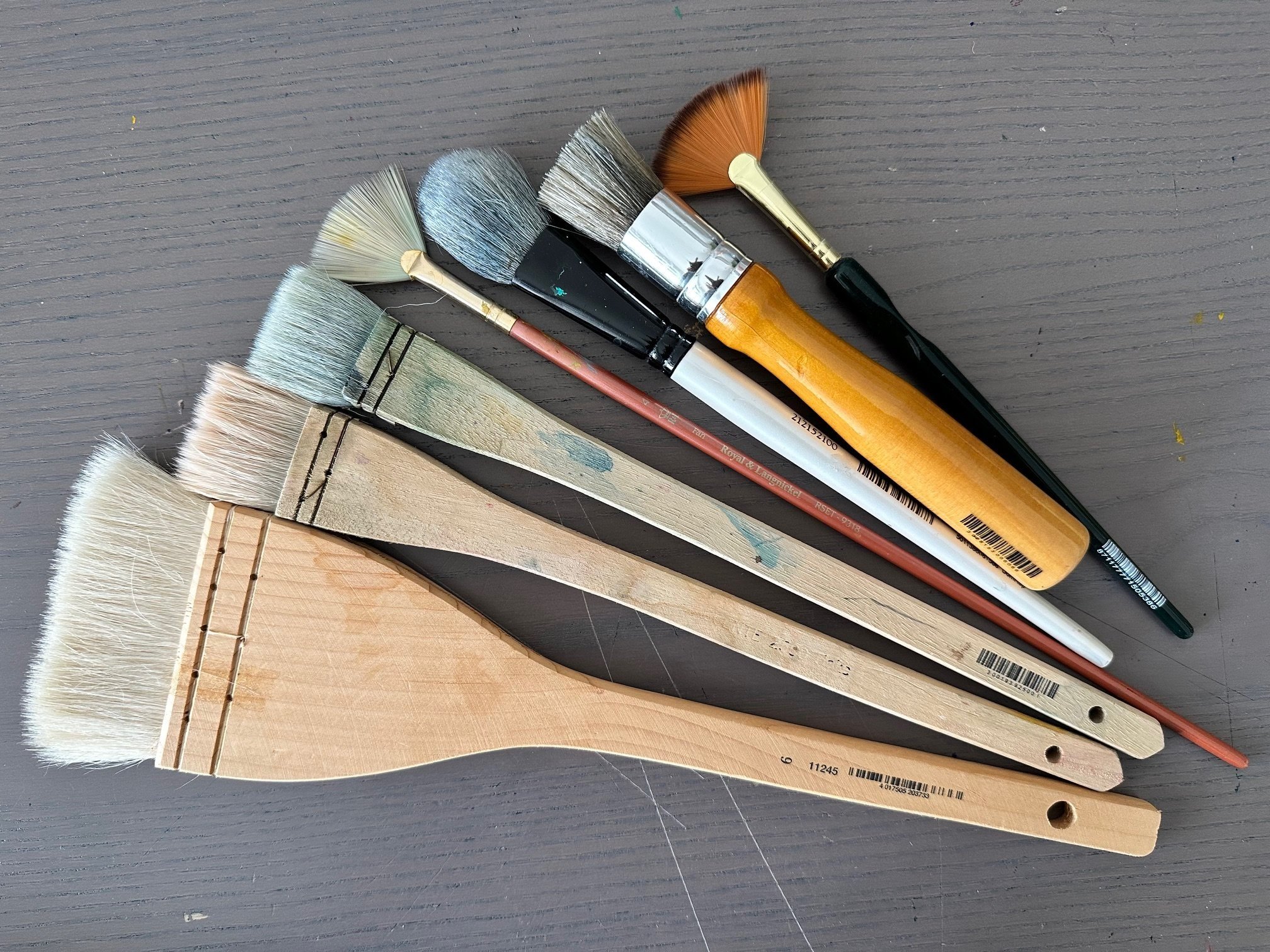The Evolution of the Paintbrush
What is a Paintbrush?
A paintbrush is a tool used to apply pigment (ink or paint). It consists of three main parts: the bristles, the ferrule, and the handle. The bristles can be made from various materials, clamped together to the handle by the ferrule.
A Journey Through Time
The evolution of the paintbrush is a fascinating tale. Early Chinese artists used bamboo sticks with animal hair tied at the end, while Egyptians utilized clusters of thin twigs, reeds, or palm leaves. Over time, the materials and techniques evolved to include a variety of animal hairs and synthetic materials.
Ancient Beginnings
It's estimated that some form of paintbrush was used by humans as far back as the Paleolithic era (2.5 million years ago). Painting kits, believed to be 100,000 years old, were found in a cave in South Africa. The delicate San rock art, depicting non-human beings, hunters, and hybrids, suggests the use of fine brushes made from animal hair or feathers.
Cultural Contributions
Different civilizations contributed uniquely to the development of paintbrushes:
Romans: Used horse and pig hair.
Japanese: Preferred hair from squirrels, goats, or weasels.
Islamic Golden Age: Artists used hair from sables, mongoose, and camels.
The variety of animal hairs allowed for diverse brush types, from wide and thick to delicate and thin.
Modern Developments
In recent years, ethical concerns, sustainability, and affordability have driven the development of synthetic brushes. These brushes, first produced in the 1950s and gaining traction in the 1970s, are now the most commonly used. Synthetic brushes are made from polyester filaments, which are often treated to mimic the properties of natural hairs. For example, filaments are dyed multiple times to resemble mongoose hair, and a light wave and anti-static agent are added to imitate squirrel hair.
Wide and flat, fan shaped, flat or a mop! Everything is possible. The Price of Perfection
Natural hair brushes are becoming more expensive due to dwindling supplies, pushing artists towards synthetic alternatives. However, some natural hair brushes, like the Kolinsky Sable brushes made from Siberian weasel tail hairs, remain highly sought after. A size 50 Kolinsky Sable brush can cost over €2,500, making it a luxury item for many artists.
Variety of Brushes
There are many types of brushes, each serving a specific purpose. Some have straightforward names, while others are more imaginative: flat, bright, filbert, round, fan, glaze, shader, cat tongue, liner, script, Egbert, mop, whale's tail, and fandango, to name a few.
My most well used brushesLet's get ready to pick up a brush and “fandango”!



